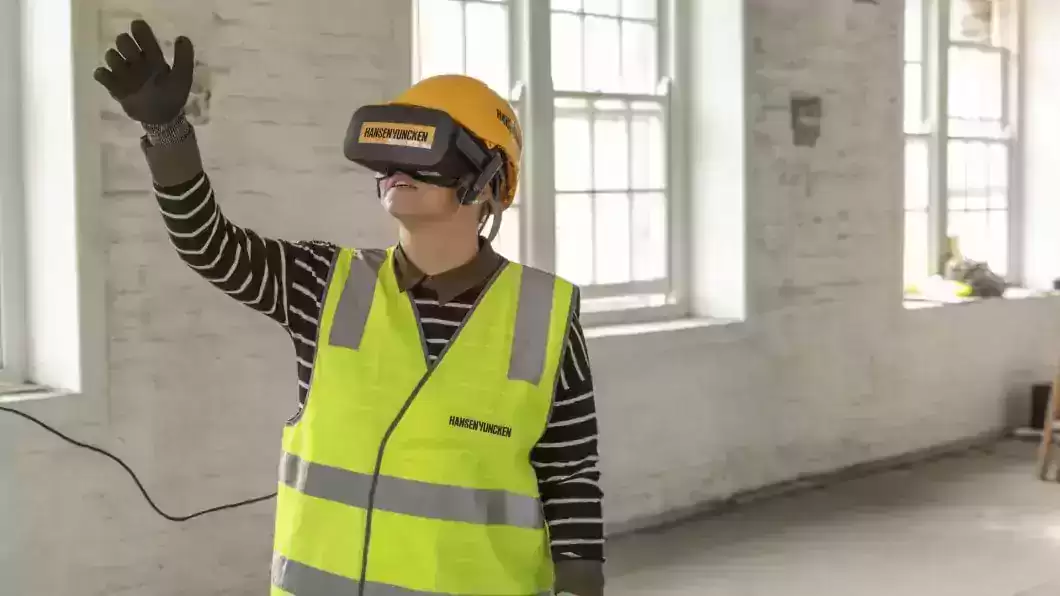The most exciting innovations in the construction industry
The most exciting innovations in the construction industryو
For those who pay close attention to the construction industry, 2021 was a major year for innovation.
And in this article, we’ll talk about the trends we could see emerging on more construction sites in the future.
-
3D printing
3D printing is transforming the construction industry, especially in the development of residential housing.
Across the industry, many early developers are embracing and using 3D printing to produce standardized components off-site.
This reduces labor requirements compared to on-site construction.
This production method allows significant economies of scale and improved quality control
as the 3D printed components are manufactured in a controlled factory environment.
The first fully 3D printed house was completed in April 2021 in the Netherlands,
and many others have been completed since then.
With a general trend of regulators and insurers globally towards accepting it as a satisfactory method of construction.

2. Tesla Bot
Elon Musk’s recent announcement that Tesla is developing its first fully automated robot could cause major upheaval in the construction industry.
A robot is designed to handle mundane, repetitive, or dangerous tasks that humans typically perform.
The robot will also use the same cameras, sensor technology,
and the same advanced artificial intelligence that was developed for Tesla cars.
If the Tesla robot is successfully developed and released as planned,
This could change the way the construction industry deals with high-risk activities and lead to significant cost savings and reduced risks to workers.

3. AI-powered design
The tunneling industry benefits from an abundance of publicly available data about past tunneling projects,
which is the perfect space for artificial intelligence and big data to flourish. Tunnels.ai
It is a bold project, led by a community of civil engineers who collect and organize data.
Behind the scenes, AI algorithms have been developed to use this data to predict key design and construction parameters for tunnel projects.
Including tunnel design parameters, TBM specifications, cost forecasts, carbon emissions forecasts,
etc. And best of all, the tunnels.
The project is completely free and all they ask is that you voluntarily join the community and contribute data if you enjoy the tools.

4. Bionic exoskeletons
Electronic skeletons were first developed by the US military,
and technology companies have recently begun developing and releasing similar designs for the construction industry.
Workers are often restricted by national regulations that set the maximum weight they can safely carry,
which is around 25kg.
Electronic exoskeletons enable workers to carry weights of up to 90kg,
with little effort needed by the operator to handle that weight.
These exoskeletons are available for purchase today, however,
and they are not cheap, with the average cost setting the buyer back in excess of $100,000.
However, this is still a new technology and is believed to be maturing and affordable over time.

5. Automation and robotics
Robots have been infiltrating the construction industry for a long time, but this year we have seen great strides forward with the launch of home-building robots.
In one case, a truck-mounted boom allowed bricks to be placed at predetermined locations on the plan with mortar between the bricks.
The nature of the process means that the robot does not need any rest and can work 24/7.
This reduces the time needed to construct the brick structure of the house from days to hours.

6. Smart wearable devices
Smart wearable devices allow construction contractors to monitor the status and whereabouts of workers at any time during their shifts.
This could allow for monitoring of worker productivity and safety while notifying the employer immediately if the worker suffers an injury or requires medical assistance.

7. Automated setup
In 2021, great strides have been made in automating this process with bots now available to automatically map buildings directly from 3D BIM models and diagrams,
Marking floor plans and building plans.
8. Low carbon concrete
With sustainability more important today than ever before, companies are moving on land and sea to develop low carbon concrete.
As it stands, concrete production is a significant source of CO2 emissions,
with concrete producing approximately 7% of carbon emissions worldwide,
which is seen as an obstacle to achieving net carbon.
Significant improvements to concrete’s carbon footprints have been revealed this year,
which feature sustainable-energy kilns and the use of clinker substitutes.
However, it is finding slow adoption in construction projects as many customers still prefer to choose traditional,
proven concrete specifications.

9. An electrically powered station
Tunnel stations and electric powered vehicles have become a feature of trade fairs for the construction industry.
With an ever-growing array of builders now having electric or hybrid alternatives.
In addition to reducing carbon emissions and the possibility of obtaining energy for the plant from renewable sources,
This has the added benefit of reducing the exposure of the workforce on site to harmful emissions from burning fossil fuels.
For more architectural news







